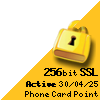Traveling internationally brings the thrill of new experiences—and the headache of staying connected with people back home. That moment when you realize your regular phone plan would charge astronomical rates for a simple call home can be genuinely alarming. International phone cards remain one of the most straightforward and cost-effective solutions to this common travel challenge, despite all our modern technology.
Let me walk you through everything you need to know about getting and using these practical communication tools—without the confusing jargon or complicated explanations.
What Exactly Are International Phone Cards?
International phone cards (sometimes called calling cards) are prepaid products that let you make calls to international destinations at reduced rates. They come in two main forms:
- Physical cards: Plastic cards with a hidden PIN you reveal by scratching off a protective layer
- Virtual cards: Digital products where you receive PIN codes via email or through an online account
The basic concept is simple: you’re pre-purchasing phone time at wholesale rates, which is why they’re typically much cheaper than direct international calls through your regular carrier.
You might be wondering, “Aren’t these outdated in the age of smartphones and messaging apps?” Not really. While there are certainly more options now, phone cards still offer distinct advantages—they don’t require internet access, work with any phone (including landlines), and offer predictable costs without surprise charges.
What You Should Consider Before Buying
Before rushing to buy any international phone card, there are three key factors that should guide your decision: cost structure, reliability, and convenience.
Cost Structure (The Fine Print Matters)
The advertised per-minute rate is just the beginning of the story. You’ll want to look at:
- Per-minute rates: These vary widely depending on your destination country
- Connection fees: Some cards charge a fee each time you place a call—even if no one answers
- Maintenance fees: Certain cards deduct small amounts daily or weekly just for having an active account
- Expiration policies: Many cards have time limits regardless of remaining balance
For example, a card advertising “2¢ per minute to France” might actually cost much more when you factor in the 99¢ connection fee per call and the 79¢ weekly maintenance charge.
Reliability Considerations
Nothing’s more frustrating than a call that drops mid-conversation or sound quality so poor you can barely understand each other. Check for:
- Network coverage: Some cards work better in certain regions
- Call clarity: Budget cards sometimes route calls through multiple carriers, degrading quality
- Provider reputation: Quick online searches can reveal customer experiences with specific brands
Convenience Factors
Think about how you’ll actually use the card in practice:
- How easy is it to buy and activate?
- What’s involved in recharging it when your balance runs low?
- Do you need to memorize complicated access codes or PINs?
The right balance between these factors depends entirely on your specific needs. A business traveler making frequent calls might prioritize reliability and convenience over finding the absolute lowest rates. Someone making occasional calls to check in with family might focus more on basic cost-effectiveness.
Where to Buy International Phone Cards
You have several options for purchasing these cards, each with its own advantages.
Physical Retail Locations
You can find physical calling cards at:
- Convenience stores
- Grocery stores
- Newsagencies
The main advantage here is immediacy—you can walk in, pay cash if you prefer, and walk out with your card right away.
Online Purchase Options
For potentially better rates and selection, consider:
- Direct provider websites like Phone Card Point
- Third-party retailers like Phone Card Choice
The online approach typically offers better rates but requires planning ahead. Most virtual cards are delivered instantly after purchase, but you’ll need to print out or save the access information.
If you’re concerned about legitimacy—a valid worry—stick with established providers that have been in business for years. Check reviews carefully, as this industry does have its share of questionable operators with hidden fees and poor service.
And if you’re wondering how quickly you can get a card before your trip—physical cards are available immediately in stores, while virtual cards can be purchased and activated within minutes online.
How to Choose the Right Card for Your Needs
Not all international phone cards are created equal, and the “best” one varies dramatically based on where and how you’ll use it.
Some cards specialize in specific countries or regions. A card offering amazing rates to India might have terrible rates to Brazil. Consider:
- Country-specific cards if you’ll be calling primarily one destination
- Global cards if you need to call multiple countries
- Regional cards that specialize in certain areas (like Latin America or Asia)
Match the Card to Your Calling Patterns
Be honest about how you’ll actually use the card:
- For occasional short calls home, a card with higher per-minute rates but no maintenance fees might be best
- For frequent longer conversations, look for the lowest per-minute rates, even if there are connection fees
- If you need data options too, some modern cards offer combination packages
Technical Compatibility
This is one of the advantages of using international phone cards, there’s nothing to install or set up, simply dial:
- The access number
- Enter in your PIN
- Then dial the international number.
That’s it!
Using Your International Phone Card: A Step-by-Step Guide
Once you’ve got your card, here’s how to actually use it:
First-Time Setup
- Activate if necessary: Some cards require activation by calling a number or visiting a website but most cards like the ones from Phone Card Point will activate immediately upon your first successful call.
- Scratch off the protective coating to reveal your PIN (for physical cards)
- Save your PIN and access numbers somewhere secure (but accessible)
Making Calls
The typical process works like this:
- Dial the access number printed on your card
- When prompted, enter your PIN (usually followed by the # key)
- Dial the international number you’re calling, usually starting with:
- Country code (like 33 for France or 81 for Japan)
- The local number (sometimes dropping the first 0 if present)
If you’re calling from abroad to the US, most cards have simplified dialing processes—just follow the instructions that came with your card.
When Things Go Wrong
Call not going through? The most common issues are:
- Incorrect dialing sequence (particularly with country codes)
- Local phone restrictions (some hotels block access to toll-free numbers)
- Insufficient balance for the call’s minimum duration
Most cards provide customer service numbers—save these contacts before you travel, as they can be difficult to find if you’re already experiencing problems.
Managing Your Balance
Keep track of your remaining balance by:
- Calling the customer service number on the card
- Checking the provider’s website or app
- Noting the remaining minutes announced at the beginning of calls
When you need to recharge, most cards offer options through their websites or by phone. Some physical locations also offer recharge services for certain card brands.
Modern Alternatives Worth Considering
While international phone cards remain useful, it’s worth knowing your options:
- VoIP apps like Skype, WhatsApp, and Viber offer free or low-cost international calls—but require internet access
- eSIM technology allows you to add a temporary local plan to compatible smartphones
- International plans from your home carrier might be worth it for short trips
Phone cards still shine in situations where internet access is unreliable, when calling landlines is necessary, or when you need the most predictable pricing structure.
Making Your Decision
After all this information, the decision comes down to balancing three factors:
- Where you’re going (and who you’ll be calling)
- How often you’ll need to make calls
- What devices and resources you’ll have available
For many travelers, the simplest approach is grabbing a card from a trusted provider with good rates to your specific destination. Despite all our technological advances, there’s something reassuring about having a reliable backup communication method that works without WiFi or data connections.
Whether you purchase from a local store before departure or order online for better rates, the process is straightforward once you’ve made your choice. And that initial effort pays off the first time you make an international call without worrying about shocking charges on your next phone bill.



 Recharging PIN
Recharging PIN






